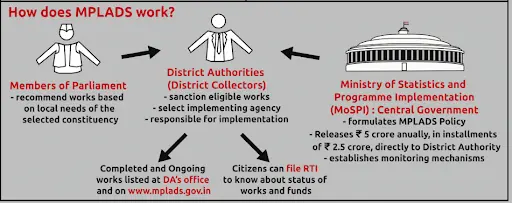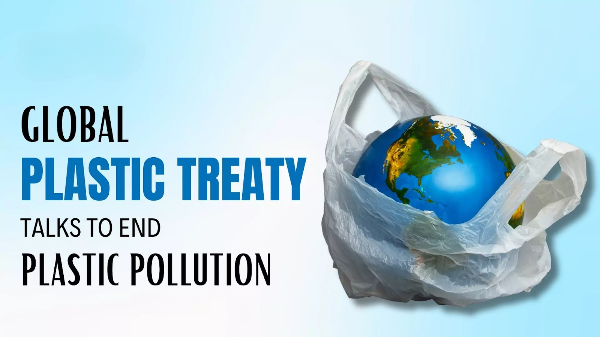Wednesday, 12th June 2024
Accreditation: Empowering and Shaping the Future of India
Why in the news ?
- The Quality Council of India (QCI) recently commemorated 'World Accreditation Day' in more than 20 locations throughout the country.
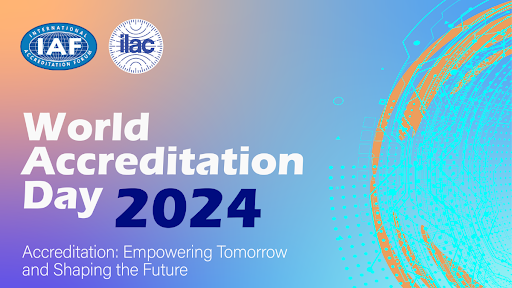
What is Accreditation ?
- This involves a third-party affirmation regarding the competence of a Conformity Assessment Body (CAB) to perform specific conformity assessment activities.
- CAB encompasses various entities such as Testing Laboratories, including medical laboratories, Calibration Laboratories, Proficiency Testing Providers, and Certified Reference Material Producers.
- It aids institutions in recognizing their strengths and weaknesses through a comprehensive review process, enabling them to identify areas for internal planning and resource allocation.
- Accreditation enhances customer confidence in accepting testing/calibration reports issued by accredited laboratories.
- Accreditation holds importance in India as it helps ascertain whether an institution meets or surpasses minimum standards of quality
What are the Benefits of Accreditation ?
- Facilitating Global Trade and Access to Markets: Multilateral arrangements foster confidence and robust frameworks, laying the groundwork for Government-to-Government (G2G) bilateral and multilateral trade agreements.
- Regulatory Assurance: Accreditation assures technical competence, allowing regulators to prescribe Third-party NABCB accredited conformity assessment, enhancing harmonisation within national regulatory structures.
- Process Harmonisation: Accreditation promotes harmonisation within national regulatory and legislative structures, facilitating continual improvements.
- Competitive Advantage: NABCB accreditation provides credible evidence of conformance with national and international standards, enabling organisations to distinguish themselves in the marketplace.
- Risk Management and Quality Assurance: Conformity assessment bodies undergo assessment according to international standards, ensuring rigorous risk analysis and the delivery of quality services.
- Confidence and Trust: NABCB accreditation instils confidence and reliability in government, industry, and consumers, fostering trust and assurance in products and processes.
- Additional Benefits: Enhanced customer confidence and satisfaction, robust Quality Management Systems, improved operational control, cost reduction, and prevention of loss due to defects are among the supplementary advantages
|
Quality Council of India (QCI):
|
Sector-wise Accreditation in India:
- IT Sector:
- The Information Technology Act, 2000 delineates the responsibilities of certifying authorities in issuing Digital Signature Certificates.
- This ensures that certifying authorities adhere to stringent standards, safeguarding the security and authenticity of digital signatures and electronic records.
- Archival Management:
- The National Archives of India, entrusted with archival records, adheres to rigorous standards to preserve and provide access to these invaluable resources for future generations.
- Legal Framework:
- The India Code, maintained by the Ministry of Law and Justice, serves as an accredited repository of central and state Acts, rules, regulations, and statutes, ensuring legal accessibility and reliability.
- Education:
- India's expansive educational landscape is pivotal in shaping the nation's future and is undergoing accreditation initiatives.
- With a target of achieving a 50% Gross Enrollment Ratio (GER) in higher education by 2037, enhancing education quality is paramount.
- The implementation of the National Education Policy (NEP 2020) is driving rapid transformation in the Indian higher education system.
What are the challenges Related to Accreditation in India ?
- Standardisation and Implementation of Guidelines: In certifying authorities issuing Digital Signature Certificates (per the Information Technology Act, 2000), where varying standards and guidelines may lead to inconsistencies.
- Resource Management: Managing the extensive records held by the National Archives of India, essential for future generations, presents challenges in preservation and accessibility due to the sheer volume of records.
- Low Participation: Reluctance among institutions to engage in the accreditation process remains a persistent concern, hindering progress in quality assurance initiatives.
- Complex Process: Accreditation procedures involve lengthy and intricate information collection processes, raising concerns about subjectivity and inconsistencies across assessments conducted by different agencies.
- Multiplicity of Agencies: The existence of multiple agencies within the Union Government of India tasked with periodic approvals, assessment, accreditation, and ranking of Higher Education Institutions (HEIs) complicates the accreditation landscape.
- Quality of Education: Elevating education quality requires comprehensive improvements in teaching-learning methodologies, research, innovation, and skill development, emphasising sustainability and societal integration over mere infrastructure and inputs
Major Reforms in Accreditation:
- The Ministry of Education has established a high-level panel, chaired by Dr. K Radhakrishnan, to enhance the assessment and accreditation of higher educational institutions.
- Proposed reforms aim to strengthen periodic approval, assessment, accreditation, and ranking of all higher educational institutions (HEIs) in India.
-
Reforms advocate for Binary Accreditation (accredited or not accredited) rather than graded assessments.
-
Maturity-Based Graded Accreditation (Levels 1 to 5) is proposed to incentivize accredited institutions to continually enhance their standards and broaden their expertise.
- Both NABL and NABCB constitute India's accreditation infrastructure and are members of the Multilateral Recognition Arrangements of the International Accreditation Forum (IAF) and the International Laboratory Accreditation Cooperation (ILAC).
- NABL boasts over 8000 accredited labs, while NABCB has accredited over 260 CABs (Conformity Assessment Bodies).
Conclusion:
Hence, Accreditation in India plays a pivotal role in driving quality education, fostering innovation, and nurturing excellence, thereby shaping the future for all stakeholders. As India's economy integrates into the global market and the government's liberalisation policies aim to enhance exports, it becomes increasingly crucial for accredited laboratories to meet international standards of competence.
|
UPSC Civil Services Examination, Previous Year Questions (PYQs) Q:1 With reference to ‘Quality Council of India (QCI)’, consider the following statements: (2017)
Which of the above statements is/are correct?
Ans: (c) |
UN Report on Global Debt Crisis
Why in the news?
- The UN Trade and Development (UNCTAD) recently published a report titled "A World of Debt 2024: A Growing Burden to Global Prosperity," which indicated an unprecedented global debt crisis.
- Approximately 3.3 billion people currently live in countries where debt interest payments outnumber education and health-care expenditures.
Key Highlights of the Report:
- Rapid Increase in Global Debt:
- The Institute of International Finance reports a staggering global debt of USD 315 trillion in 2024, equivalent to three times the global Gross Domestic Product (GDP).
- Escalating Public Debt:
- Global public debt is on the rise due to a combination of recent crises, including the impact of Covid-19, escalating food and energy prices, and the repercussions of climate change.
- Growing Net Interest Payments:
- Developing countries particularly bear the brunt, with net interest payments on public debt soaring to USD 847 billion in 2023.
- This marks a significant 26% increase compared to 2021, reflecting the mounting financial burden faced by these nations.
- Regional Disparity in Debt Growth:
- Public debt in developing countries is surging at twice the rate compared to developed countries, underscoring a growing regional disparity.
- Developing countries accounted for USD 29 trillion of the global total in 2023, marking a significant increase from 16% in 2010.
- Challenges in Africa:
- Africa's debt burden is outpacing its economic growth, leading to a rise in the debt-to-GDP ratio across the continent.
- The number of African countries with debt-to-GDP ratios exceeding 60% surged from 6 to 27 between 2013 and 2023.
- Impact of Global Issues:
- Unforeseen global challenges and a sluggish economy have hampered expansion and reduced domestic income in African countries, exacerbating their debt situation.
- Higher Debt Servicing Share of Income & Impact on Climate Initiatives:
- Approximately 50% of developing countries are now allocating a minimum of 8% of their government revenues to service their debts, representing a twofold increase over the past decade.
- Presently, developing nations are allocating a larger portion of their GDP to debt interest payments (2.4%) compared to climate initiatives (2.1%).
- Meeting the targets outlined in the Paris Agreement necessitates raising climate investments to 6.9% of GDP by 2030, a goal that is challenging to achieve amidst escalating debt obligations.
3 Shifts in Official Development Assistance (ODA):
- Decreasing Overall Aid: ODA has witnessed a decline for two consecutive years, reaching USD 164 billion in 2022.
- More Loans and Less Grants: There has been a notable shift in the nature of foreign aid, with the proportion of aid provided as loans increasing from 28% in 2012 to 34% in 2022.
- Less Help with Existing Debt: Assistance for managing existing debt, such as debt relief and restructuring, has substantially decreased from USD 4.1 billion in 2012 to a mere USD 300 million in 2022.
What are the Initiatives Related to Solving Debt Crisis?
- Measures to Address the Global Debt Crisis:
- Inclusive Governance, Transparency, and Accountability:
- Enhance participation of low-income countries in decision-making processes regarding debt management.
- Promote financial transparency and accountability to prevent debt crises, as emphasised by the UN Office for Sustainable Development.
- Contingency Financing:
- Increase access to emergency financial support, such as Special Drawing Rights (SDRs), to bolster reserves during crises.
- Utilise mechanisms like the IMF's emergency financing to provide vital support to countries in need.
- Managing Unsustainable Debt:
- Improve existing frameworks for debt restructuring, including mechanisms like the G20 Common Framework for Debt Treatment.
- Implement automatic provisions for suspending debt payments during crises to offer flexibility and stability to affected economies.
- Scaling up Sustainable Financing:
- Transform Multilateral Development Banks (MDBs) to play a larger role in financing Sustainable Development Goals (SDGs).
- Encourage private investment in sustainable projects like clean energy.
- Fulfil existing commitments for aid and climate finance, particularly for developing countries, to facilitate the transition towards sustainable development.
|
What is Global Debt?
Composition of Global Debt:
|
Coronal Mass Ejections (CMEs)
Why in the News ?
- Recently, India’s solar mission Aditya-L1 captured images of the Sun and its Coronal Mass Ejections (CMEs) during a solar storm in May.
- The active region AR13664 on the Sun erupted several X-class and M-class flares, which were associated with these CMEs.

About the Aditya-L1:
- Aditya-L1 is India’s first space mission dedicated to observing the Sun. It is ISRO’s second space-based astronomy mission following AstroSat, launched in 2015.
- Aditya-L1 was launched on September 2, 2023, to study the Sun and its corona.
- The mission is positioned at the L1 point, a location in space where the gravitational forces of the Earth and the Sun balance, allowing the spacecraft to maintain a stable orbit.
- Polar Satellite Launch Vehicle (PSLV) with 7 payloads (instruments) on board.

The 7 payloads:
- Visible Emission Line Coronagraph (VELC): Captures images of the solar corona in visible light to analyse its structure and dynamics.
- Solar Ultraviolet Imaging Telescope (SUIT): Takes images of the solar chromosphere and transition region in ultraviolet light to comprehend heating and dynamic processes.
- Solar Low Energy X-ray Spectrometer (SoLEXS): Records the solar X-ray spectrum to examine solar flares and coronal mass ejections.
- High Energy L1 Orbiting X-ray Spectrometer (HEL1OS): Detects high-energy solar X-rays to study particle acceleration mechanisms.
- Plasma Analyser Package for Aditya (PAPA): Measures the properties of solar wind plasma to investigate its interaction with Earth's magnetosphere.
- Aditya Solar Wind Particle Experiment (ASPEX): Assesses the properties of energetic particles in the solar wind to explore their effects on Earth's atmosphere.
- Solar Irradiance Monitor (SIM): Measures variations in solar irradiance and their impact on Earth’s climate.
Objectives:
- Coronal Heating: Investigate the mechanisms behind the heating of the solar corona.
- Solar Wind Acceleration: Study the acceleration processes of the solar wind.
- Coronal Magnetometry: Analyse the magnetic field of the solar corona.
- Near-UV Solar Radiation: Examine the origin and variations of near-UV radiation from the Sun.
- Continuous Observation: Continuously monitor the photosphere, chromosphere, and corona.
- Solar Energetic Particles: Observe and analyse solar energetic particles.
- Magnetic Field Study: Study the magnetic field of the Sun comprehensively.
Location:
- L1 Halo Orbit: Aditya-L1 is positioned in a halo orbit around the L1 point, approximately 1.5 million kilometres from Earth. This orbit allows continuous observation of the Sun.
- L1 Point: The L1 point, or Lagrange Point 1, is one of five positions in the Earth-Sun orbital plane where the gravitational forces of the two bodies balance each other.
- Lagrange Points: These are positions in space where the gravitational forces of a two-body system, such as the Sun and Earth, create regions of enhanced gravitational attraction and repulsion.
|
Coronal Mass Ejections (CMEs):
|
|
UPSC Civil Services examination PYQ Q:1 The terms ‘Event Horizon’, ‘Singularity’, ‘String Theory’ and ‘Standard Model’ are sometimes seen in the news in the context of-(2017)
|
Source: TH
Why India needs a third aircraft carrier
Why in the news?
- According to recent media reports, the Indian Navy's long-standing proposal for a third aircraft carrier is becoming more realistic, as Cochin Shipyard Limited (CSL) prepares to begin construction on an extra Vikrant-class platform weighing roughly 40,000 tonnes.
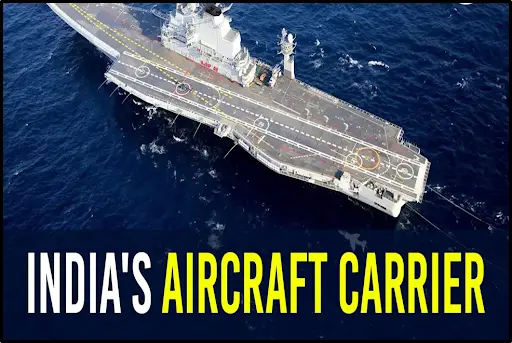
|
Indigenous Aircraft Carrier-2 (IAC-2):
|
Future Scope of Indigenous Aircraft Carrier-2 (IAC-2):
- Operational Versatility:
- Enhanced Flexibility: IAC-2 will significantly boost the Indian Navy’s operational versatility, allowing for a variety of missions such as power projection, maritime security, and humanitarian assistance.
- Advanced Capabilities: The carrier’s modern technologies and advanced capabilities will ensure its effectiveness in meeting evolving maritime challenges.
- Strategic Deterrence:
- Maritime Deterrence: IAC-2 will play a crucial role in deterring potential adversaries, strengthening India's maritime deterrence posture.
- Regional Influence: Its presence will underscore India’s commitment to safeguarding its maritime interests, enhancing its stature as a major maritime power in the Indo-Pacific region and contributing to regional stability and security.
- Technological Advancement:
- Innovation and Development: The construction and operation of IAC-2 will drive significant technological innovation and advancement within India’s indigenous defence industry.
- Self-Reliance: It will stimulate research and development efforts, promoting self-reliance and technological sovereignty in naval defence capabilities.
Concerns Associated with Indigenous Aircraft Carrier-2 (IAC-2):
- Budgetary Issues:
- High Cost: The projected cost of constructing and operating IAC-2 is substantial, leading to concerns about budget constraints and resource allocation amidst competing defence priorities.
- Operational Vulnerabilities:
- Evolving Threats: IAC-2 may encounter challenges from evolving anti-access/area denial (A2/AD) strategies employed by potential adversaries like China and Pakistan.
- Susceptibility to Modern Warfare Tactics: Its large size and visibility make it susceptible to modern maritime warfare tactics, including advanced missile systems and submarine threats, potentially compromising its operational effectiveness.
- Strategic Alignment:
- Questions may arise regarding the carrier’s role and relevance in addressing contemporary security threats.
- There may be debates on whether alternative defence investments could yield better national security and strategic deterrence outcomes.
Upgrading aircraft Capabilities as a Solution:
- Enhanced Airborne Capabilities:
- Utilising Existing Aircraft: The Indian Air Force (IAF) can project maritime power using aircraft like the SEPECAT Jaguar IM/IS and Sukhoi Su-30MKI fighters.
- Advanced Maritime Strike Weapons: These aircraft can carry advanced maritime strike weapons, including the Su-30MKI squadron equipped with BrahMos-A supersonic cruise missiles, significantly enhancing maritime strike capabilities.
- Strengthening Island Defences:
- Andaman and Nicobar Archipelago: Upgrading military capabilities in this region could establish an anti-access/area denial (A2/AD) maritime 'exclusive zone', deterring Chinese naval activities and bolstering regional security.
- Balanced Force Development:
- Diversified Investments: Channelling investments to upgrade existing surface combatants, submarines, and air assets can provide a balanced approach to enhancing naval capabilities.
- Critical Areas: Ensuring adequate funding for critical areas like mine counter-measures, maritime patrol aircraft, and naval utility helicopters is essential for comprehensive maritime security and force modernization
Conclusion:
Hence, the Indigenous Aircraft Carrier-2 (IAC-2) signifies a notable leap forward for India's naval strength. However, it is imperative to tackle financial limitations, strategic vulnerabilities, and diversify investments in maritime and airborne assets to forge a resilient and well-rounded defence strategy.
|
UPSC Civil Services Examination, Previous Year Question (PYQ) Prelims: Q.1 Which one of the following is the best description of ‘INS Astradharini’, that was in the news recently? (2016)
Ans: (c) Q.2 Consider the following in respect of Indian Ocean Naval Symposium (IONS): (2017)
Which of the above statements is/are correct?
Ans: (b) Mains: Q:1 What are the maritime security challenges in India? Discuss the organisational, technical and procedural initiatives taken to improve maritime security. (2022) |
Source: IE
Cooperative Societies not bound by RTI Act
Why in the news ?
- Recently, the Madras High Court has held that cooperative societies in the state are exempt from the Right to Information (RTI) Act, 2005, as they do not qualify as public authorities, thus not obligated to provide information on their functions to citizens.
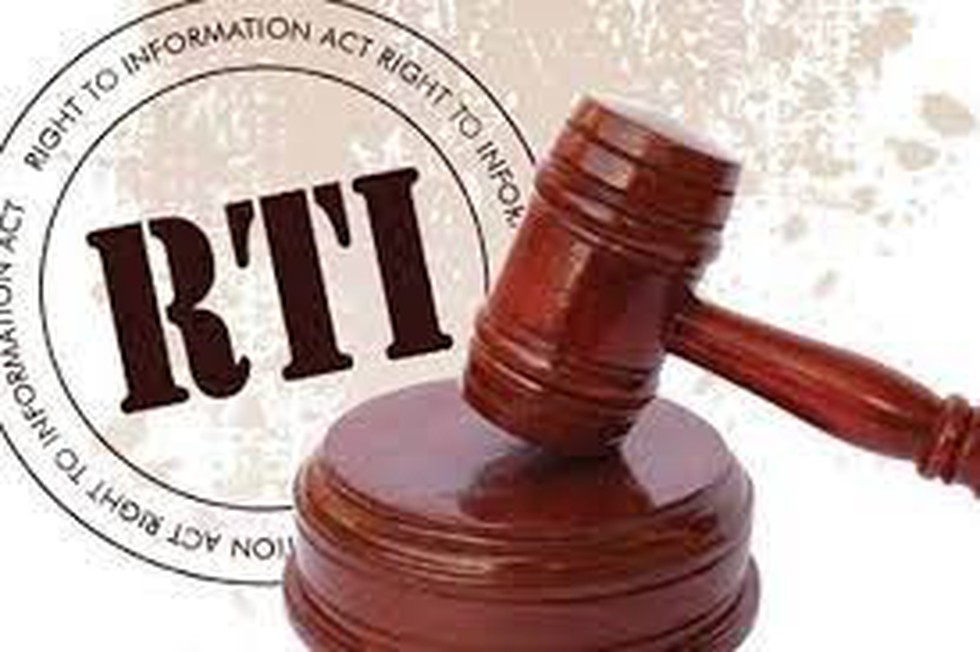
- Justice V. Bhavani Subbaroyan stated that cooperative societies do not qualify as ‘public authorities’ under Section 2(h) of the RTI Act. The court’s decision aligns with previous rulings, including a 2013 Supreme Court verdict.
Key Implications of Judgement:
- Positive Implications:
- Autonomy Affirmed: Upholds the autonomy of cooperative societies by exempting them from the obligations of the RTI Act, preserving their independence in decision-making and operations.
- Legal Clarity Established: Offers a definitive legal interpretation that sets a precedent for similar cases in the future, providing clarity and guidance for cooperative societies and stakeholders.
- Operational Streamlining: Relieves cooperative societies from the administrative burden of RTI compliance, potentially enhancing operational efficiency and resource allocation.
- Negative Implications:
- Transparency Reduction: Limits public access to information regarding cooperative societies, potentially diminishing transparency and hindering public oversight of their activities.
- Increased Risk of Misuse: Without RTI oversight, there may be an elevated risk of corruption or mismanagement of funds within cooperative societies, posing a threat to financial integrity and accountability.
- Potential Public Distrust: The ruling could contribute to public scepticism and mistrust, particularly if cooperative societies are perceived as non-transparent entities, eroding confidence in their governance and practices.
About the Cooperative societies:
- Cooperative societies are formed voluntarily by individuals who share common economic, social, and cultural interests, pooling their resources to achieve common goals.
- The roots of India's cooperative movement lie in the agriculture and related sectors, originating as a response to protect farmers from exploitation by money lenders.
- The formalisation of India's cooperative movement occurred towards the end of the 19th century, drawing inspiration from the German model of agricultural credit banks.
- Cooperative societies in India serve diverse functions, ranging from providing credit facilities to engaging in the production, procurement, and marketing of various products such as fertilisers, milk, sugar, and fish.
Constitutional provisions cooperative societies:
- The first five-year plan (1951-56) post-independence underscored the importance of adopting cooperatives to address various aspects of community development.
- The 97th Constitutional Amendment Act of 2011 introduced significant changes related to cooperative societies:
- It recognized the right to form cooperative societies as a fundamental right (Article 19).
- It incorporated a new Directive Principle of State Policy focusing on the Promotion of Cooperative Societies (Article 43-B).
- It added a new Part IX-B to the Constitution titled "The Co-operative Societies" (Articles 243-ZH to 243-ZT).
- It empowered the Parliament to enact laws concerning multi-state cooperative societies (MSCS), while state legislatures were given authority over other cooperative societies.
- In 2021, the Union Ministry of Cooperation was established, taking over the responsibilities previously held by the Ministry of Agriculture.
- The Multi-State Co-operative Societies (Amendment) Bill, 2022 was passed by Parliament in 2023 with the aim of enhancing the regulation of Multi-State Co-operative Societies
Issues Faced by the Cooperatives:
- Governance Deficiencies: Cooperatives frequently encounter issues related to governance, including insufficient transparency, accountability, participation, and democratic decision-making processes.
- Politicisation and Government Overreach: Political parties and government bodies often exert undue influence on cooperatives, compromising their autonomy and ability to function independently.
- Membership Engagement Challenges: Cooperatives struggle to engage and retain active members who are willing to contribute to their capital, management, and day-to-day operations.
- Capital Mobilization Hurdles: Cooperatives face difficulties in raising sufficient capital to support their operational and investment requirements, hindering their growth and sustainability.
- Lack of Professional Talent: Cooperatives often face a shortage of skilled and qualified professionals capable of effectively managing their affairs, leading to operational inefficiencies and limited growth prospects.
Steps Taken to Address Cooperative Challenges:
- Establishment of Multi-State Cooperative Societies (MSCS): Formed to facilitate the functioning of cooperatives across the nation, promoting collaboration and synergy among diverse regions.
- Enactment of MSCS (Amendment) Act & Rules, 2023: Notified to bolster governance standards, enhance transparency, ensure accountability, and reform electoral procedures within multi-state cooperative societies, aiming to foster better management and operations.
- Creation of Ministry of Cooperation: Instituted by transferring pertinent functions from the erstwhile Ministry of Agriculture, Cooperation, and Farmers Welfare, with a focus on promoting cooperation and coordinating cooperative activities nationwide.
- Emphasis on Ease of Doing Business: Prioritising streamlining processes to facilitate ease of doing business for cooperatives, aiming to reduce bureaucratic hurdles and enhance operational efficiency.
- Development of Multi-State Co-operative Societies: Facilitating the development and growth of multi-state cooperative societies, fostering their expansion and enabling them to effectively cater to diverse needs and regions across the country.
Conclusion:
Thus, while cooperatives have played a vital role in poverty alleviation, food security, and environmental management, their autonomy remains essential for effective operation. Hence, reform and revitalization efforts are imperative for the cooperative movement.
|
UPSC Civil Services Examination, Previous Year Question (PYQ) Mains Q:1 “In the villages itself no form of credit organisation will be suitable except the cooperative society.” – All India Rural Credit Survey. Discuss this statement in the background of agricultural finance in India. What constraints and challenges do financial institutions supplying agricultural finance face? How can technology be used to better reach and serve rural clients? (2014) |
Source: TH
Agnipath Scheme
Why in the news ?
- The ruling-party government's introduced Agnipath scheme,in June 2022, has encountered resistance from multiple political factions and Armed Forces veterans, primarily due to concerns regarding its effects on military recruitment and soldier welfare
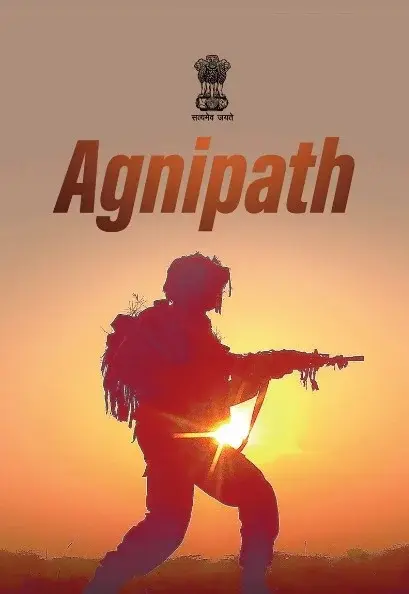
What is the Agnipath Scheme ?
- The Agnipath Scheme introduces a new military rank called "Agniveer," translating to "Fire-Warriors."
- It aims to recruit non-commissioned officers, including soldiers, airmen, and sailors, into the Indian Armed Forces.
- These recruits serve for a four-year term, with up to 25% eligible to transition to permanent commission status for an additional 15 years based on merit and organisational needs.
- Currently, all non-technical cadre personnel, except for the medical branch, are enlisted under this scheme.
Eligibility Criteria:
- Candidates aged between 17.5 and 23 years are eligible to apply, with the upper age limit increased from 21.
- Girls within the specified age range can apply for the Agnipath entry, with no specific reservation for women under this scheme.
Pay & Benefits:
- Death on Duty: Families receive a combined sum of Rs 1 crore, comprising the Seva Nidhi package and the soldier's unserved salary.
- Disability: Agniveers can receive compensation up to Rs 44 lakh, depending on the severity of the disability, caused by or worsened due to military service.
- Pensions: Agniveers do not receive a regular pension after their 4-year service, except for the 25% selected for permanent commission, who become eligible for a pension.
Goal of Agnipath:
- The scheme aims to maintain a youthful armed forces and reduce the number of permanent soldiers, leading to significant savings in government pension spending on defence forces.
Why was the Agnipath Scheme Introduced?
- Younger, Fitter Force: Create a more agile fighting force by emphasising younger recruits, leading to faster response times and better adaptation on the battlefield. Implementation of Agnipath is expected to reduce the average age in the Armed Forces from 32 years to 26 years.
- Reduce Pension Bill: It aims to alleviate the burden of the growing defence pension bill, projected to reach Rs 2.5 lakh crore by 2025. Agnipath's shorter service duration for most recruits could help manage this expenditure effectively.
- Technological Integration: The scheme seeks to capitalise on the tech-savviness of younger recruits to integrate emerging technologies into the Armed Forces more effectively.
- Skilled Workforce for Civilian Sector: Agniveers are envisioned to transition to the civilian workforce with valuable skills and discipline gained during their service, contributing to a more skilled national workforce and economic growth.
- More Employment Opportunities: The scheme is expected to increase employment opportunities, as soldiers with skills and experience acquired during the four-year service can find employment in various fields.
What are the Issues Associated with Agnipath Scheme?
- Lack of Retirement Benefits: The absence of gratuity or pension upon completion of the 4-year tenure has led to dissatisfaction among aspirants seeking job security and retirement benefits.
- Short Service Duration: The 4-year term is perceived as insufficient, raising concerns about inadequate motivation and training compared to permanent soldiers. It may also result in a deficit of skills and experience in the armed forces.
- Age Limit Issues: The upper age limit of 23 years has excluded many potential applicants, particularly those affected by pandemic-related disruptions in recruitment.
- Unemployment Concerns: Limited permanent absorption (only 25%) exacerbates existing youth unemployment, particularly amid broader economic challenges like inflation and inequalities.
- Perceived Political Motives: Experts question the scheme's rushed implementation without sufficient consultation, raising suspicions of political motivations, especially ahead of elections. Lack of endorsement from defence forces adds to the scepticism.
- Pension Bill Reduction: The scheme is viewed as a means for the government to reduce defence pension expenditure, prioritising financial savings over long-term force development.
Way Forward:
- Raising the Age Limit and Permanent Retention Quota:
- Extend the service period for Agniveers to 7-8 years and increase the entry age for technical roles to 23 years.
- Enhance the regular service retention rate for Agniveers from the current 25% to 60-70%.
- Enhanced Entitlements and Benefits:
- Provide Agniveers with a contributory pension scheme, generous gratuity, and ex-gratia for disabilities incurred during training.
- Offer opportunities in other security forces, veteran status, and preference for government jobs, employing a transparent, merit-based retention system.
- Implement Robust Skilling and Resettlement Programs:
- Develop comprehensive skilling and resettlement programs in partnership with the private sector and government agencies.
- Mandate the compulsory absorption of Agniveers by private employers and corporations through legislation.
- Raising Educational Standards:
- Increase educational requirements for Agniveers from 10 to 10+2 and introduce a more rigorous national entrance exam to ensure a higher quality of recruits.
Conclusion:
Hence, the Agnipath scheme marks a significant shift in India's defence recruitment strategy, showcasing early indicators of enhanced motivation, intelligence, and physical standards among Agniveers. This emphasis on the human element fosters unit pride and cohesion, essential for effective defence operations.
|
UPSC Civil Services Examination Previous Year Question (PYQ) Prelims Q:1 Department of Border Management is a Department of which one of the following Union Ministries? (2008)
Ans: (b) Mains Q1: Analyse the multidimensional challenges posed by external state and non-state actors, to the internal security of India. Also discuss measures required to be taken to combat these threats. (2021) |
Przewalski horses (Equus ferus ssp. przewalskii)
Why in the news ?
- Recently, Przewalski horses are being reintroduced to the Kazakh steppe.

About:
- The Kazakh steppe is the native habitat of this endangered species. Przewalski horses are commonly referred to as one of the world’s last breeds of wild horses.
- Appearance: Stockily built with large heads, shorter legs and smaller size than the domestic horses.
- They are genetically different from modern domestic horses. Przewalski has 33 chromosome pairs, compared to 32 for the domestic horse.
- Behaviour: Horses maintain visual contact with their family and herd at all times and communicate using multiple methods, including vocalisations, scent marking, and a wide range of visual and tactile signals.
- Gestation Period: 11–12 months. They reach sexual maturity at two years of age.
- The horses are capable of resisting harsh winters like the ones in Kazakhstan, where temperatures can drop below minus 30 degrees C, and food runs scarce.
- Distribution: Mainly in China and Mongolia, but also in France and Russia.
|
- It is named after the Russian geographer and explorer Nikolay Przhevalsky.
- Once extinct in the wild, it has been reintroduced to its native habitat in Mongolia in the Khustain Nuruu National Park, Takhin Tal Nature Reserve, and in Central Asia and Eastern Europe.
- IUCN status: EN.
Source: (TH)
Conservation of seals at Alaska
Why in the news:
- Recently, scientists and Indigenous leaders teamed up to conserve seals at Yakutat, Alaska.

Ancestral balance between people and nature:
- The Yakutat fjord was settled by migrating clans of the Eyak, Ahtna, and Tlingit tribes following the retreat of glaciers.
- Clan leaders oversaw hunting activities to prevent premature harvesting, overhunting, or wastage of resources.
- Modern Tlingit residents uphold this traditional lifestyle, harvesting over 100 diverse species for subsistence, including fish, birds, sea mammals, land game, and plants.
- Among these, harbour seals hold particular significance, with their rich meat and blubber prepared using traditional recipes and consumed in everyday meals and memorial potlatch feasts.
Reasons for decline:
- Commercial hunting
- The US acquisition of Alaska from Russia in 1867 disrupted traditional sealing practices in Yakutat.
- Yakutat became a major hunting area for the commercial sealing industry from approximately 1870 to 1915.
- Overexploitation of seals for their skins led to a drastic decline in the seal population during the 1920s.
- In the 1960s, rising skin prices resulted in unsustainable hunting practices, further decimating the seal population.
- By the 1970s, commercial sealing ceased with the implementation of the Marine Mammal Protection Act, but the seal population never fully recovered, declining by 80% to 90%.
- Climatic factors:
- Ocean warming, driven by global climate change and an unfavourable cycle of the Pacific Decadal Oscillation, has reduced the number of fish that are important in seals’ diets.
Conservation efforts:
- The indigenous community in Yakutat has adapted their diet and reduced hunting activities, providing seals with the opportunity to raise their pups without disturbance.
- Through collaboration with authorities, they actively monitor and co-manage the seal population, leveraging their traditional knowledge.
- Efforts to protect the seal rookery from disruptions caused by cruise ships have been spearheaded by the community.
- Embracing ancestral values of stewardship and reverence for seals, the Yakutat people are dedicated to safeguarding the species and ensuring its survival.
|
Harbour Seal (Phoca vitulina):
|
Source: (DTE)
Imperatives to Enhance Agricultural Performance in India
Context:
- Despite its large land area, India's agricultural sector faces productivity and competitiveness challenges. Though foodgrain production hit record levels in 2023, the sector's GDP contribution has declined compared to other sectors, reflecting slower development.
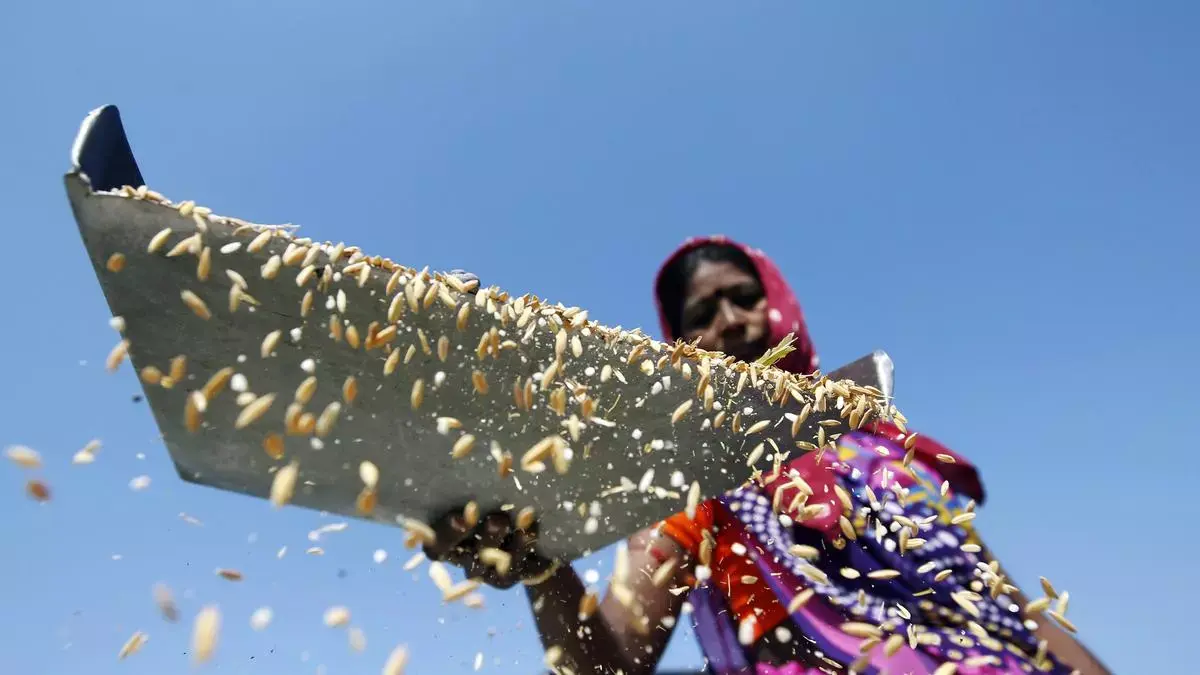
Decline in Agriculture’s GDP Share:
- The share of agriculture in India’s GDP dropped notably from 35% in 1990-91 to 15% in 2022-23, indicating the swift expansion of the industrial and service sectors.
- Despite various challenges, India witnessed a record-breaking foodgrain production of 3.2 billion tonnes in 2023, marking a substantial increase of 140.71 million tonnes from the previous fiscal year.
- With a population exceeding 1.40 billion, ensuring food security remains a pressing concern, necessitating continual innovation and advancement in the agricultural sector.
Key Challenges:
- Limited Availability of Advanced Crop Nutrition: Regulatory constraints and licensing hurdles in India hinder access to tailored crop nutrition, impeding the adoption of innovative fertilisers that could enhance productivity.
- Subsidised vs. Specialty Fertilisers: Bulk fertilisers, heavily subsidised, often fail to meet the specific nutritional needs of crops, while specialty fertilisers encounter regulatory barriers that restrict their market entry.
- Innovation and Efficiency Gap: The reluctance to adopt innovative agricultural practices and fertilisers limits the potential for higher yields and competitiveness in global trade.
- Subpar Yields: Inadequate access to advanced fertilisers and regulatory constraints contribute to lower crop yields, adversely impacting farmer incomes and export potential.
- Stringent Regulatory Process: India's Fertilizer Control Order (FCO) prolongs the fertiliser registration process, creating hurdles for innovation and the introduction of new products.
Government Reforms and Initiatives:
- National Trade Facilitation Action Plan (NTFAP) 2017-2020: This initiative, primarily targeting cross-border trade, indirectly enhances agricultural efficiency by improving import/export procedures for agricultural inputs and products.
- 2014 Guidelines for Water-Soluble Fertilisers: Demonstrating the government's commitment to streamline regulations and foster innovation in the fertiliser sector, these guidelines reduced approval times for new water-soluble fertilisers to under 60 days, promoting increased fertigation and improved crop quality.
- Digital Registration Processes: The digitization of fertiliser registration applications aims to simplify procedures and expedite approvals, facilitating the introduction of innovative products.
Way Forward:
- Micro-nutrient Coated Fertilisers: Enhancing bulk fertilisers with micronutrients can improve efficiency and reduce reliance on subsidies.
- Streamlined Regulatory Framework: Implementing standardised specifications for fertilisers can expedite approval processes for innovative products.
- Investment in Research and Development: Allocating resources to develop customised fertiliser formulations for Indian soil and crop requirements will drive innovation.
Conclusion:
Hence, streamlining the fertiliser registration process and fostering innovation are pivotal for boosting agricultural productivity, empowering farmers, and fostering sustainable growth in the sector. Through regulatory reforms, research incentives, and digital integration, India can unleash its agricultural potential and enhance competitiveness on the global stage.
|
UPSC Civil Services Examination PYQ Mains: Q:1 What is an Integrated Farming System? How is it helpful to small and marginal farmers in India? (2022) Q:2 What are the present challenges before crop diversification? How do emerging technologies provide an opportunity for crop diversification?(2021) Q:3 What are the major factors responsible for making the rice-wheat system a success? In spite of this success how has this system become bane in India?(2020 ) Q:4 How has the emphasis on certain crops brought about changes in cropping patterns in the recent past? Elaborate the emphasis on millets production and consumption. (2018) Q:5 How do subsidies affect the cropping pattern, crop diversity and economy of farmers? What is the significance of crop insurance, minimum support price and food processing for small and marginal farmers? (2017) Q:6 Explain various types of revolutions, took place in Agriculture after Independence in India. How have these revolutions helped in poverty alleviation and food security in India? (2017) Q:7 What are the major reasons for declining rice and wheat yield in the cropping system? How crop diversification is helpful to stabilise the yield of the crops in the system? (2017) |
Source: TH
Share the article
Edukemy’s Current Affairs Quiz is published with multiple choice questions for UPSC exams
MCQ
Get Latest Updates on Offers, Event dates, and free Mentorship sessions.

Get in touch with our Expert Academic Counsellors 👋
FAQs
UPSC Daily Current Affairs focuses on learning current events on a daily basis. An aspirant needs to study regular and updated information about current events, news, and relevant topics that are important for UPSC aspirants. It covers national and international affairs, government policies, socio-economic issues, science and technology advancements, and more.
UPSC Daily Current Affairs provides aspirants with a concise and comprehensive overview of the latest happenings and developments across various fields. It helps aspirants stay updated with current affairs and provides them with valuable insights and analysis, which are essential for answering questions in the UPSC examinations. It enhances their knowledge, analytical skills, and ability to connect current affairs with the UPSC syllabus.
UPSC Daily Current Affairs covers a wide range of topics, including politics, economics, science and technology, environment, social issues, governance, international relations, and more. It offers news summaries, in-depth analyses, editorials, opinion pieces, and relevant study materials. It also provides practice questions and quizzes to help aspirants test their understanding of current affairs.
Edukemy's UPSC Daily Current Affairs can be accessed through:
- UPSC Daily Current Affairs can be accessed through Current Affairs tab at the top of the Main Page of Edukemy.
- Edukemy Mobile app: The Daily Current Affairs can also be access through Edukemy Mobile App.
- Social media: Follow Edukemy’s official social media accounts or pages that provide UPSC Daily Current Affairs updates, including Facebook, Twitter, or Telegram channels.

